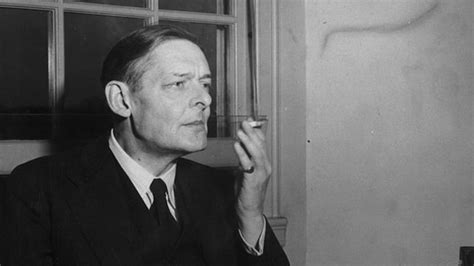Post-modernity, I’m told, is omnipresent: it’s the air we breathe, the dust on our furniture, the black mold in the neglected bathroom. But not everyone thinks so. The philosopher Roger Scruton denies the inevitability of the post-modern, blaming the conviction of its existence on the belief in the inevitability of Hegel’s dialectic.
C. S. Lewis insisted on being an “Old Western Man,” and T. S. Eliot saw himself much the same. At least some men have managed to resist the wet blanket of modernity and its black-sheep child, post-modernity.
However true that may be, something has happened that has prompted the insistence on the phenomenon of the post-modern world. The loss of faith in man’s intellect, ingenuity, and technical skill in the debacle of three twentieth-century wars, starting the Great War with its machine-gunned cavalry charges and clouds of mustard gas; then World War II with its climactic atomic bombs; and, for us Americans, the Vietnam war killed the appetite for the modern project and left many of its former adherents with a bitter aftertaste.
Modernity meant optimism: what man could dream, he could do, allowing for a degree of patience. That confidence has not disappeared, not by a long shot, but the cold winds of pessimism have frozen the smiles of modernity’s prophets so that they resemble so many grinning death’s heads.
Opposing the modern is the post-modern intellectual, wearing the smile of the buffoon, declaring language, politics, and thought as absurd as life itself, whose knee-jerk response is subversion.
As a college professor, I find the phenomenon of post-modernity interesting in part because it fascinates a number of my students, in many cases some of the brightest. And why not? French Prime Minister Clemenceau said long ago that there never was a 20-year-old who was not an anarchist.
So for the 20-something-year-old of today and the new, improved anarchy, post-modernity is rebellious and avant-garde. It has the whiff of the Molotov cocktail, of Paris 1968. What young intellectual can entirely resist that? The result is more and more papers that hum the basic notes of unresolvable ambiguity, deconstruction, and power that dot the post-modern musical staff with the monotony of a Peter Jackson film score.
Post-modernity is fashionable, but it’s also familiar, and what familiarity breeds is proverbial.
Yet, there is hope. I don’t mean that college deans are opening their collective eyes to the outright silliness of, say, the post-modern claim that all texts deconstruct except for the text insisting they do. Would that it were so! Rather, administrations at some universities are busy devising committees, offices, and seminars dedicated to the phenomenon of the post-modern student, to consider questions such as: who is he? how does he think? how do we approach him?
It’s one thing for professors to indoctrinate the kids in the latest brand of radicalisme, but when administrators jump on the bandwagon, there’s a fair chance the “radical” philosophy is already passé.
Well, then, who is the post-modern student? Again, he’s generally a very bright youth, fascinated by something that at least appears profound. Such a mind may someday tire of the latest intellectual fad and plumb the depths of Plato and Aristotle, Vergil and Dante. However, that’s not the group our administrators are addressing—not solely. To them, all students are post-modern by default.
What this generic post-modern student is poses something of a riddle, but I have been assured that he may be identified by two traits: skepticism and tolerance. My answer to the claim is simple. A lot of today’s students are lazy, indifferent, or bored—not skeptical. A real skeptic doesn’t march in lockstep protesting, say, Ferguson, and adopt a hands-up gesture just because some Al Sharpton says he should.
As for the second “post-modern” trait, what passes as tolerance on campuses is usually prescribed by the academic left. Invite Eric Holder to speak at graduation, and you’ll hear no objections, but think twice before asking Condoleezza Rice — tolerance doesn’t reach quite that far.
As to how we teach the post-modern student, put simply, we don’t. We are to engage. Now I’m all for a good class discussion, but I also know that students with minds as poorly stocked with the simple facts of history, literature, and politics require teaching and lots of it.
Furthermore, I believe many students actually like being taught. If a professor knows his stuff, comes to class prepared, and shows an honest interest in his subject and pupils, he’ll get his class’s attention. Which is to say, he’ll be able to teach them.
In order for education to take place, professors need to have a foundation from which to instill learning. The post-modern hodgepodge of nihilism and pop lingo cannot provide that foundation. (Anyone for some différance?) What will? The Western tradition of faith in reason undergirded by the Christian dogma of a logo-centric creation offers the specific remedy. It ought to be basic to all academic thinking, but the sneer of a post-modern-inspired academia has rendered the tradition irrelevant by muzzling its champions.
Bleak as that is, no battle is entirely hopeless. Let us Old Western Men enter the fray with Evelyn Waugh’s words from Scott-King’s Modern Europe (1947) in mind, slightly modified: “I think it would be very wicked indeed to prepare a young man for the post-modern world.” Think of it as the new radicalism.














